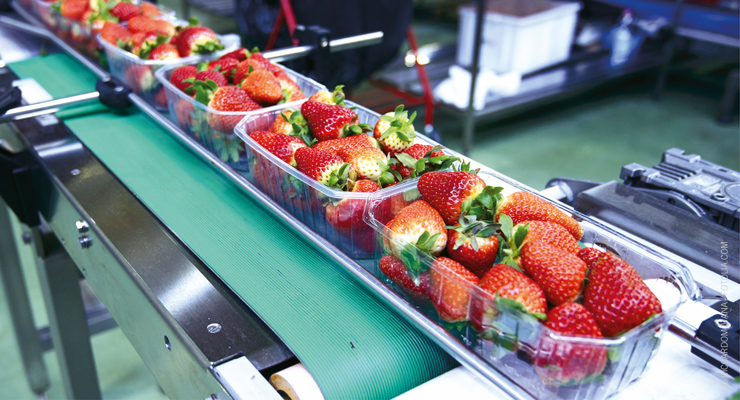 Microbial contamination not only relates to the presence of pathogens but also to spoilage organisms, such as Pseudomonas or lactic acid bacteria. Early spoilage and product quality are increasingly becoming a blemish on a brand’s reputation. Brand reputation, financial impact, and citations by regulatory agencies are at the core of the problems that occur when cleaning and sanitation is not effective in a food processing or manufacturing facility.
Microbial contamination not only relates to the presence of pathogens but also to spoilage organisms, such as Pseudomonas or lactic acid bacteria. Early spoilage and product quality are increasingly becoming a blemish on a brand’s reputation. Brand reputation, financial impact, and citations by regulatory agencies are at the core of the problems that occur when cleaning and sanitation is not effective in a food processing or manufacturing facility.
Through proper cleaning and sanitation, many biological risks can be prevented and controlled. In order to confidently state that a cleaning and sanitation operation was conducted successfully, the process should be verified on a regular basis. Choosing appropriate methods and relevant test points, determining an adequate sampling frequency, and analyzing the data collected over time, are all critical elements of a sound sampling, testing, and monitoring plan. Reliable data is derived from quality instruments or test kits that are routinely calibrated and tested for accuracy, and to eliminate human variability, individuals collecting the samples must be properly trained. For as long as these concepts have been known in the industry, many methodologies have emerged in the test kit market for verification of cleaning and sanitation as a part of an environmental monitoring program. Each method brings value to an environmental monitoring program, but choosing the right tools is key.
Visually Inspecting
Visual inspection is a longstanding method and allows for a big picture assessment of the equipment and surfaces. It simply means visually evaluating a piece of equipment or plant floor location with a flashlight or blacklight. This can be useful to find the buildup of foodstuffs that were missed during cleaning as well as discovering damaged equipment. Documentation of a visual inspection can be beneficial when assessing other data and determining trends in sanitation. For example, if the wear on a piece of equipment or part is progressing over time, maintenance can be done before a serious problem occurs. Although it has benefits, visual inspection has several limitations. It is a subjective and imprecise means of verifying proper cleaning. More importantly, even if a surface appears immaculate with no apparent residue, this does not mean it is. Visual inspection cannot ensure that all of the food residue from the previous run has been cleaned away or that a sanitizer effectively reduced the microbial level on the surface.
Microbial Enumeration
Another enduring tool in an environmental monitoring plan to verify cleaning and sanitation is microbial detection through direct enumeration by a microbiological medium. This includes not only pathogens but indicator organisms as well. Currently in the industry there is great focus and importance placed on pathogen detection, however, screening for indicator organisms is also important. Understanding the trends and harborage areas of spoilage organisms to help target cleaning and sanitation efforts can increase product quality and perhaps even lengthen the shelf life of a product. The main limitation of microbial detection through traditional methods is the amount of time it takes to obtain results, especially when compared to other methods.
Before the sample reaches the microbial enumeration medium, it must first be successfully collected and also released from the collection device. Not all materials used as collection devices have the same efficiency in recovery. It is important to choose the best collection device material for all surface types being tested and ensure that the material is biocide-free. According to ”Principles of Microbiological Troubleshooting in the Industrial Food Processing Environment” edited by Jeffrey L. Kornacki, when choosing the proper collection device, the size and shape must be appropriate for the area or surface being tested.
A swab works best in crevices and small areas that may be difficult to clean. However, due to their small size, swabs are not very sensitive when sampling large areas and can easily be impeded in areas with a heavy soil load. Pre-moistened sponges provide greater sensitivity when sampling large, flat surface areas. They also allow for greater pressure to be applied to help pick up microorganisms that have strongly adhered to the surface either by soil or their own matrix of sugar and proteins. Direct contact of a media to a surface is sensitive and works well on flat surfaces, but not as well in small spaces or gaps.
ATP
The most common rapid approach used in many facilities to assess sanitary conditions post cleaning and sanitation before starting production is measurement of levels of adenosine tri-phosphate (ATP) on surfaces or in rinse water (e.g., closed systems). Within the last several years, the decreasing size and time to result of ATP systems have made them an indispensable method for verification of cleaning and sanitation. Most ATP systems on the market are simple to use and efficient. They provide an indirect overall estimation of microbial contamination and residual organic matter that may still be present to assess the cleaning and sanitation efforts.
ACCESS THE FULL VERSION OF THIS ARTICLE
To view this article and gain unlimited access to premium content on the FQ&S website, register for your FREE account. Build your profile and create a personalized experience today! Sign up is easy!
GET STARTED
Already have an account? LOGIN

